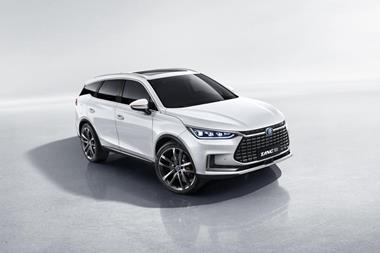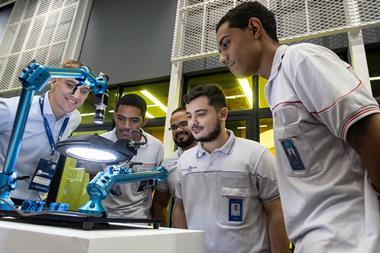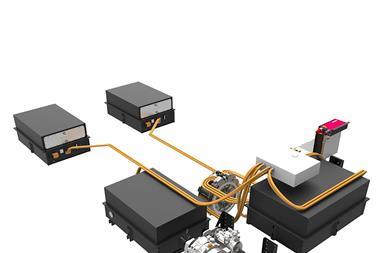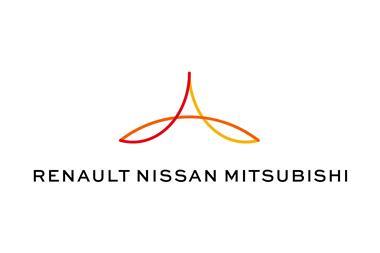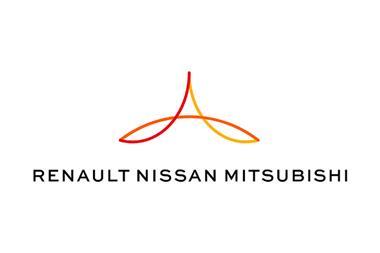Sliding towards recession, Brazil and its neighbours no longer seem like such bright prospects for global vehicle-makers, which have made significant investments in what looked to be a highly promising market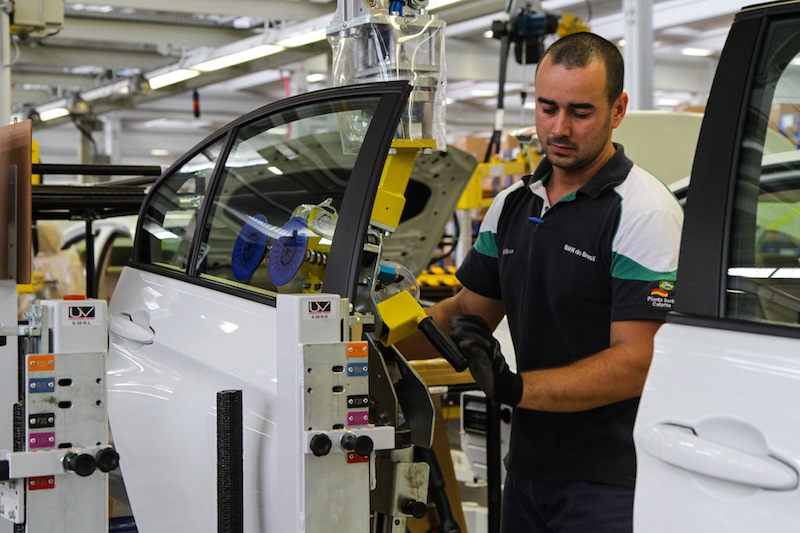
Vehicle-makers in South America, and especially Brazil, are having to take evasive action as the once-promising ‘Latin Tigers’ enter what analysts predict could be an extended economic slump. A poor start to the year in Brazil – by far the region’s biggest vehicle market – has seen sales and production fall by more than 20%, following a 15% fall in total production of cars and commercial vehicles to 3.15m in 2014.
From being talked about as a country that could overtake Japan to become third largest in global car sales behind China and the US, parallels are now being drawn with the disastrous recent collapse of the Russian car market. “Brazil’s automotive sector ended its golden decade in 2013 and it appears to be we are just entering the lost decade,” says Guido Vildozo, manager of Latin America light vehicle sales forecasts, for analysts IHS Automotive.
Vildozo predicts that the slump will have the largest impact on the ‘big four’ carmakers: Fiat, General Motors (GM), Volkswagen (VW) and Ford. Based on figures from the country’s vehicle manufacturer association, Anfavea, Fiat is still number one, just ahead of GM’s Chevy brand, with just over half a million sales last year; but that was more than 100,000 down on the year before, and Fiat has had to slow down production at its giant Betim plant, Minas Gerais, which has a production capacity of 800,000 units per annum.
In March, the local press reported that Fiat handed enforced holidays to around 2,000 of the plant’s 20,000 staff and that production would be stopped for a week at the beginning of April. Betim is the largest plant in Fiat Chrysler’s global production network and is crucial to both the OEM and many local suppliers. Evidence of the latter came later the same month, when Delphi, a supplier of wiring harnesses to Fiat as well as other vehicle-makers, said it would shut its plant in Itabirito, Minas Gerais, with the loss of 800 jobs, according to the news website Diario do Comercio.

To invest or not to invest?
The automotive industry accounts for around a fourth of Brazil’s industrial output and is sensitive to the country’s wider economy, which IHS predicts will drop into recession this year. The knock-on effect on vehicle sales will be an 8% cut in light vehicle sales to 3.05m this year, IHS reckons, followed by “very little improvement” the year after, says Vildozo. “We have seen a serious deterioration of the Brazilian economy over the last 60 days, exposing problems that will likely take years to resolve,” he states.
Vehicle-makers are being pulled in two directions: not wanting to commit investment until the economy improves but also being forced to localise more by the country’s Inovar Auto rules, which reduce excise tax on cars produced and sold in Brazil by 30%. Anfavea reckons that 75.8 billion reais ($23 billion) have been committed by manufacturers moving into the country by 2017, and that 10 billion of this will be directed toward R&D.
"We have seen a serious deterioration of the Brazilian economy... exposing problems that will likely take years to resolve" – Guido Vildozo, IHS Automotive
The other problem at the moment of low localisation is that while the real dives in value against the dollar, recently pushing past what analysts describe as the psychological barrier of $3 to one real (compared with 2.2 a year ago), those makers not building the majority of their vehicles in the country will indeed suffer. “OEMs that have a high import rate will likely experience headwinds as the planning for foreign exchange was done with a stronger real than where we are at present,” says Vildozo.
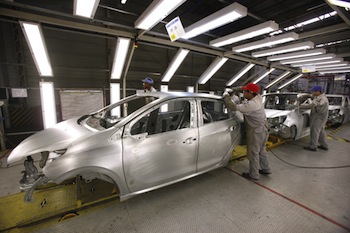
Those foreign OEMs banking on a healthy Brazilian market are now aggressively cost cutting. PSA Peugeot Citroen, which, along with Renault, has been trying to grow its footprint in this region and reduce its dependency on Europe. PSA recently added the 2008 B-segment supermini at its plant in Porto Real, Rio de Janeiro, not far from where Jaguar Land Rover (JLR) is building its new plant.
While the company is expanding its model line-up, behind the scenes it is trying to save a significant amount of money following a sales crash of 34% to 200,000 units in Latin America (just under half in Brazil) for 2014, and another 10% estimated for this year. In its recently published company report, PSA said it planned to halve fixed costs against those of 2012, and had achieved cost-cutting of 34% in 2014. The OEM gave no details of how this was accomplished, but did say the plan was to streamline all models so that they are built on just one platform and using one locally sourced engine.
Premium prospects
However, the situation is not entirely bleak in Brazil and the surrounding countries it supplies. Despite the economic doldrums, premium sales are up and in fact look set to increase as makers set up factories within Brazil. “Thus far, premium has outperformed the traditional market in the last two years. It would appear that there could be a success story being written here,” says Vildozo. According to Anfavea, Audi sales shot up 86% to just under 12,500 last year, while Mercedes also bucked the market trend by rising 27% to slot just below Audi. The association figures did not single out any other premium makers, but a fellow German OEM, BMW, is the first to start producing in the region after opening its new plant in Araquari, Santa Catarina, last October.
BMW said in a statement that it would continue to expand the 1.5m sq. m site, spending more than €200m ($215m) in “the next few years” to push annual capacity to 30,000 units and increase the model line-up from the 3-Series now to include the Mini Countryman SUV, BMW 1-Series, plus the BMW X1 and BMW X3 SUVs. The plant has a bodyshop and a paintshop, suggesting that local content will be higher than a mere CKD operation.
Following BMW is Audi, returning to Brazil this year after pulling out in 2006. The OEM will make the A3 saloon followed by the Q3 SUV at VW’s expanded São José dos Pinhais plant in Curitiba, Paraná, very close to where Renault has recently expanded its own factory. Audi head of sales Luca de Meo told the Automotive News congress in Detroit in January that he saw opportunities to sell to rich Brazilians living in the vast gated communities springing up in São Paulo. Audi will also use Brazil to pilot its new ‘virtual reality’ dealerships, using high-tech but cost-effective interactive displays at shopping centres or sports venues to sell a product without the car actually being present.
Then come JLR and Mercedes. Reckoning it has 50% of the premium SUV market, JLR last December started building a factory which will launch with the new Land Rover Discovery Sport SUV in 2016, mostly likely in kit form shipped from the OEM’s plant in Liverpool, UK. The 60,000 sq. m plant will cost 750m reais to build and will employ around 400 personnel, making up to 24,000 cars per year.
Meanwhile, in February, Mercedes started construction of a factory in Iracemápolis, São Paulo, not far from Hyundai’s plant in Piracicaba, and will build the C-Class from the beginning of 2016 and the GLA small SUV later in the year. The factory will have an annual capacity of around 20,000 units and again is likely to use kits at least initially, with plans for growth. “If the market will develop as hoped for, the plant has the potential for a further significant expansion in the future,” said Markus Schäfer, head of manufacturing and supply chain management at Mercedes cars, during the ground-breaking ceremony.
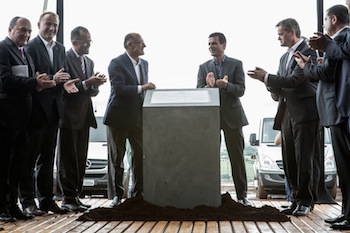
This likely means that, rather than plough a lot of capital investment into a country with an unstable economy, the OEM will hire in times of plenty, and trim staff when it gets lean.
What could dash the hopes of the premium makers is if local content levels are too low to offset currency fluctuations and push up prices. “If they move away from the sweet pricing of 80-100,000 reais, then it will be harder to materialise original projections,” explains Vildozo.
Bigger problems outside Brazil
The optimism for vehicle production elsewhere in South America which existed back in 2013 is also evaporating. “The appetite for investment in the region by the automotive sector has cooled off both in Brazil and outside Brazil,” says Vildozo. “The only big investment taking place outside Brazil is the expansion of Toyota’s Zarate plant.”
Last year, Toyota announced that it would sink $800m into the Argentinian plant, which local media reported as a record investment. The expanded plant will produce the Hilux SUV and Hilux-based SUV, the SW4, and could turn out as many as 200,000 units a year – more than double the 96,000 it made last year, according to figures from the country’s vehicle-maker organisation, ADEFA. The investment also brings chassis and bed production in-house.
However, most companies are having to take production out of the region. In 2014, the number of vehicles made in Argentina – South America’s second-biggest carmaking country – fell 22% to 617,329, according to figures from the International Organization of Motor Vehicle Manufacturers (OICA). Over the year, Ford beat Toyota, GM, Fiat, Renault, VW and PSA Peugeot-Citroen for the title of the county’s largest maker. Vehicle sales in the country plummeted by 36% to 613,848, topped by VW and Ford. All sectors were hit, with light commercial vehicles and trucks each losing 35%.
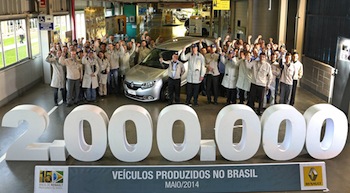
The parlous state of its neighbours might ruin the one benefit Brazil’s falling currency might have brought: exporting some of the production lost to declining sales at home. According to Vildozo, the trouble is that Brazil is competing with the slick, financially efficient automotive powerhouse that is Mexico, which overtook Brazil in carmaking figures in 2014.
In fact, Brazil had to plead with Mexico earlier this year to extend a treaty that, once ended, would have removed current tariffs of up to 35% on Mexican-made vehicles imported into Brazil. Two years ago Brazil was looking like a threat to its northern rival; now it is having to protect its own weakened industry as it struggles in the grip of a financial crisis that observers say could last for much of the decade.
























